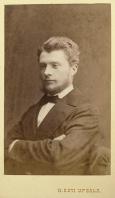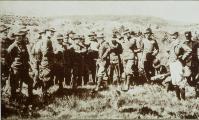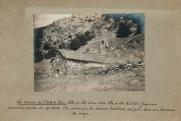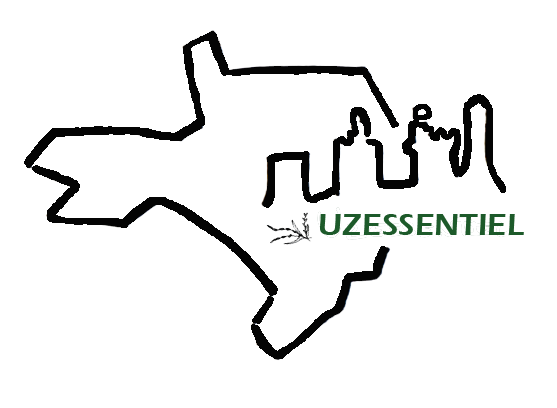
Charles Flahault, the botanist who brought Mont Aigoual back to life
FR - Born in the north of France, Charles Flahault would gain fame in the south, in Montpellier.
A short biography
A brilliant student, Charles Flahault moved to Paris to perfect his studies at a time when "Paris was the crucible for blooming scholars, philosophers and artists "*.
First he became a gardener at the Jardin des plantes de Paris after obtaining his diploma in 1872. Then he joined in 1874 the Sorbonne and the laboratory of the botanist Philippe Van Tieghem, a biologist and eminent mycologist from Bailleul like himself.
Orienting himself towards plant biology, Charles Flahault graduated in this field, obtaining a degree in natural sciences in 1876 and becoming a preparator of botany at the Faculty of Sciences in Paris.

Several missions in the Nordic countries followed (Norway, Sweden (photo: trip to Upsala), Finland - Lapland), then a passage in England. These first trips to the Scandinavian countries left Flahault with indelible memories and "a taste for botanical geography".
The Faculty of Sciences of Montpellier
In charge of courses at the Faculty of Sciences of Montpellier since 1881, he became professor in 1883 and "distinguishes himself by very illustrated courses and an active pedagogy" and "multiple outings with his students", like these "botanical excursions to the Aigoual, which take three whole days". His numerous research works lead him always further, like this herbalist adventure in the west of Algeria, where "always equipped with his painting kit, Charles Flahault transferred in colors on the staff maps the different types of vegetation encountered" **, a consequent heritage for the posterity.
"Influenced by the work of Alexander von Humboldt and Ernst Haeckel, he introduced ecology in France at the end of the 19th century. The first higher certificate of ecology (3rd cycle) will only be created in 1964 in Montpellier " **
The Institute of Botany of Montpellier
Founder in 1890 of the Institute of Botany of Montpellier, he continued his studies through new missions in northern lands, such as Denmark in 1890 but also, closer to us and until 1893, the Spanish Pyrenees, Belgium and Holland.
Good to know: From the 1880s, the Third Republic undertook a profound reform of French universities, creating institutes bringing together researchers and teachers dealing with the same discipline. In Montpellier, Flahault was commissioned to create five institutes planned in this city (botany, chemistry, geology, physics, zoology) **.
At the initiative of his son-in-law Louis Emberger, the institute created by Flahault will be later replaced by more modern facilities
Vice-president of the first international congress of botany organized in Paris in 1900, "president of the debates of the congress of Vienna in 1905, during which the International Rules of Botanical Nomenclature were written" **, he returned to the Spanish Pyrenees, the pre-Alps of Provence*, visited Tyrol, Bavaria and the Balearic Islands... and finished his itinerancy in Liguria in 1908, in Germany, in Denmark in 1913, and in the Alps of the Vaud region, in 1914.
"Flahault's work has accomplished a true renovation of botany" *
Always in search of knowledge, and sometimes algologist - "disciple of the great algologist Edouard Bornet" ** (note his various stays in several maritime regions*), mycologist, phytogeographer - always liking to study plants in their natural environment*, he participates in the creation of "the International Association of Botanists, of which he becomes the main editor of the French review" *.
"The solicitude that a people shows to its forests marks the degree of its intellectual culture and its moral education" Charles Flahault
 Wishing the preservation of wild spaces, the reforestation is the object of his concerns.
Wishing the preservation of wild spaces, the reforestation is the object of his concerns.
He thus actively participates in the project aiming at giving life again to the scrubland, but also to the Mont Aigoual, a massif overexploited during generations.
Good to know: "The Aigoual is a bald mountain. The big autumn storms (called Cevenol episodes) gully the bare ground, and torrents of mud cause increasingly catastrophic floods in the valleys, notably at Valleraugue in the Hérault valley (1812, 1847, 1858, 1861, 1868), while on the oceanic slope, the materials ripped from the Cevennes sand the port of Bordeaux" **.
The deforestation having left the Mount Aigoual prey to erosion, Charles Flahault decided to create, together with his forestry friend Georges Fabre, nurseries, but also arboretums, intended "to study the behavior of species in different ecological conditions".
10 arboretums were created between 1885 and 1903
The work of the two men, a real "link between the botanical world and the forestry world which were unaware of each other" *, gave a new life to the Mont Aigoual, undoubtedly a "crazy bet to make trees grow where God himself seems to have failed" according to Charles Flahault **.
 Among the 10 arboretums of the Mont Aigoual, you can visit in particular the one of the Hort de Dieu (the Orchard of God).
Among the 10 arboretums of the Mont Aigoual, you can visit in particular the one of the Hort de Dieu (the Orchard of God).
"The trail is part of a network of forestry trails and sites that allow you to discover the forest and the Aigoual massif" ***
Starting from the Observatory of Mont Aigoual, the interpretation trail of the Arboretum of Hort de Dieu extends over almost 5 kms and a difference in altitude of 285 m for about 3 hours 30 minutes of walking. You can also find it from the parking of the Arboretum. Your walk will then be shortened, as the trail is only 3 kms long in the middle of nature, and the difference in altitude is only 110 m.
Many thanks to Marie-France Flahault, president of the association Présence de Charles Flahault, for her collaboration to this article and the documentation provided.
More information: Marc Khanne's documentary, "Aigoual, la forêt retrouvée" (Artis, Télé Miroir, Les écologistes de l'Euzière, 2007)
Sources: * Speech by Alexandre Guilliermond (delivered at the inauguration of the monument raised in memory of Charles Flahault), ** Booklet Flahault, grandeur nature, *** the site Sud-Cévennes), wikipedia.
Translated with the support of www.DeepL.com/Translator






